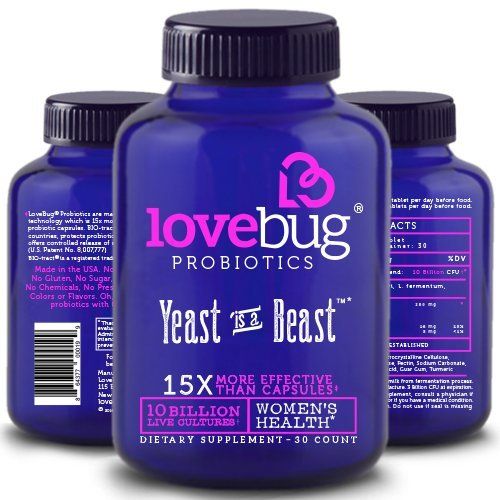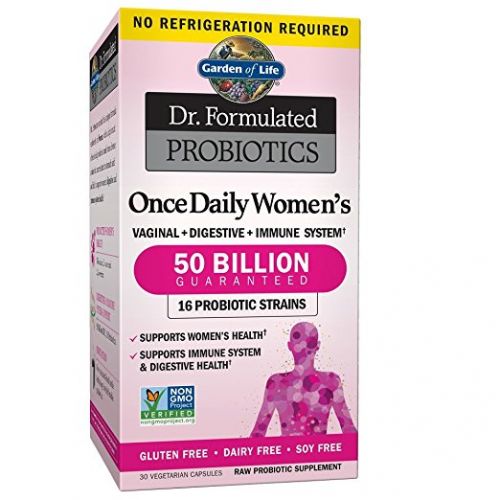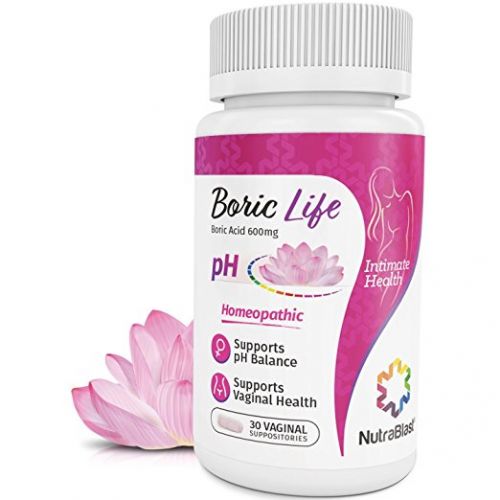reviewed by Age Brain Review Panel
Yeast infections occur when the microbiome of a woman’s vagina and/or vulva become imbalanced, causing pain, burning, and inflammation. Candida albicans, a single-celled fungus, is the usual source. It overcrowds other species of beneficial yeast and bacteria in the area.1 Fortunately, there are solutions.

Yeast Control
More than 50 species of bacteria live in the human vagina, with the most common in healthy women being strains of Lactobacillus. Various causes can alter the populations of bacteria and yeast in the vagina, such as systemic infections or hormone fluctuation. When lactobacilli become depleted, candida can become overpopulated. Hormone replacement therapy (HRT) has been found to restore lactobacillus populations in post-menopausal women.2 Prolonged use of antibiotics can decrease lactobacilli populations and increase susceptibility for yeast infections, so avoid excessive antibiotic use if possible to prevent this.3

Oral Probiotics
Yeast resistance to conventional antimicrobial treatments has become a major issue, and antimicrobial therapy does not always work to treat a yeast infection.2 Oral probiotics can be a useful, non-pharmacological way to restore microbe populations in the intestines, urinary tract, and the vagina.4 Clinical trials have found that oral supplementation with Lactobacillus rhamnosus and Lactobacillus fermentum is able to promote and maintain a healthy balance of lactobacilli in the vaginal mucosal lining.5,6
Top Recommended:

Topical/ Suppository Probiotics
A While oral probiotics have proven useful in supporting the prevention yeast infections, studies have found them to be less effective in eliminating infections that have already become established.1 The direct application of probiotic substances to the vulva or vagina by means of a topical cream or a vaginal capsule has been investigated for their ability to recolonize the vaginal tract with beneficial microbes during an active yeast infection.8
[1]a Pericolini E, Gabrielli E, Ballet N, et al. Therapeutic activity of a Saccharomyces cerevisiae-based probiotic and inactivated whole yeast on vaginal candidiasis. Virulence. 2017;8(1):74-90.
[2] Cribby S, Taylor M, Reid G. Vaginal microbiota and the use of probiotics. Interdisciplinary perspectives on infectious diseases. 2008;2008:256490.
[3] Goncalves B, Ferreira C, Alves CT, Henriques M, Azeredo J, Silva S. Vulvovaginal candidiasis: Epidemiology, microbiology and risk factors. Critical reviews in microbiology. 2016;42(6):905-927.
[4] Amital H, Gilburd B, Shoenfeld Y. Intelligent nutrition: health-promoting mechanisms of probiotics. The Israel Medical Association journal : IMAJ. 2003;5(11):812-813..
[5] Reid G, Beuerman D, Heinemann C, Bruce AW. Probiotic Lactobacillus dose required to restore and maintain a normal vaginal flora. FEMS immunology and medical microbiology. 2001;32(1):37-41.
[6] Morelli L, Zonenenschain D, Del Piano M, Cognein P. Utilization of the intestinal tract as a delivery system for urogenital probiotics. Journal of clinical gastroenterology. 2004;38(6 Suppl):S107-110.
[7] Product Review: Probiotics (Including Kombucha and Pet Supplements). ConsumerLab;2018.
[8] Kim JM, Park YJ. Probiotics in the Prevention and Treatment of Postmenopausal Vaginal Infections: Review Article. Journal of menopausal medicine. 2017;23(3):139-145.
[9] Pendharkar S, Brandsborg E, Hammarstrom L, Marcotte H, Larsson PG. Vaginal colonisation by probiotic lactobacilli and clinical outcome in women conventionally treated for bacterial vaginosis and yeast infection. BMC infectious diseases. 2015;15:255.
-
Difference Between Prebiotics and Probiotics
By Dr. KarenMarch 8, 2022 -
Vegan Probiotics
By Dr. KarenMarch 8, 2022 -
Probiotics for Weight Loss
By Dr. KarenMarch 8, 2022 -
Probiotics for Constipation
By Dr. KarenMarch 8, 2022 -
Best Time to Take Probiotics
By Dr. KarenMarch 8, 2022
Search the blog
Article Categories
- All Articles (95)
- Rating Charts (1)
- Beauty & Skincare (17)
- FAQ (0)
- Hair Care (9)
- Health & Wellness (12)
- Anti-Aging (4)
- Kid's Health (0)
- Makeup (2)
- Men's Health (2)
- Oral Care (3)
- Sunscreen (7)
- Skin Tools & Treatments (10)
- Supplements (26)
- Videos (0)














